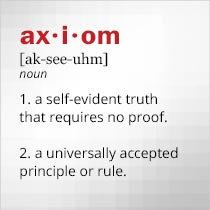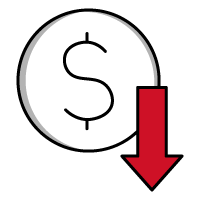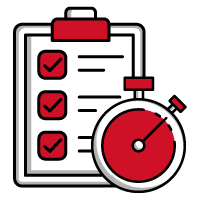Capturing Semiconductor Current and Voltage Characteristics
August 01, 2019
 |
Semiconductors have become such a profound part of modern electronic circuits and systems that they are often taken for granted. But a key part of any design process involving semiconductors requires gaining a full understanding of the current-versus-voltage (I-V) characteristics of each semiconductor and how each semiconductor will respond under different I-V conditions (and, in generation, under as many as possible different operating conditions). With the proper test equipment, semiconductor I-V measurements can be performed quickly and efficiently.
As with any electrical tests, I-V measurements take time, and time is a key parameter of those measurements. Semiconductor I-V testing is typically performed as a series of swept measurements, with values of I and V changing for each measurement as a means of detecting any trends in device performance under changing operating conditions. For example, swept I-V measurements may involve device measurements with fixed voltage and increasing current, fixed current and increasing voltage, or current and voltage both increasing steadily from minimum to maximum levels. Such measurements can be performed to maximum operating levels or even failure levels for a device. When faster testing is required, I-V testing can be performed as several spot tests, using established levels of I and V across the full operating range of a device.
Time plays a part in how I-V measurements are made since device testing can be performed with continuous I and V settings as well as under dynamic or even pulsed I-V conditions, to better understand how a semiconductors will behave under changing I-V conditions, such as in a radar circuit or system. The duration of the I and V applied to a device under test (DUT) is also an important condition of an I-V measurement, since maximum acceptable I and V levels to a DUT will usually decrease as dynamic test conditions approach continuous-wave (CW) conditions. Performing I-V measurements with longer pulse widths will bring the power consumption closer to CW conditions but will also provide a longer look at a device’s tendency to deviate from reference performance levels. Similarly, fast measurement sampling rates make it possible to open more measurement windows during the measurement period for a DUT, increasing the chances of capturing performance variations in I-V characteristics during that measurement period.
Specifying I-V Testers
Some of the basic things to consider when specifying an I-V tester include its I and V supply and measurement ranges, its measurement resolution and accuracy for both parameters, its measurement speed (such as sampling rates), flexibility (such as whether measurements are manual or automatic), and how easily an instrument can be upgraded (such as modular versus fixed mainframe format). Many newer I-V device testers provide a host of related measurements, such as impedance measurements and capacitance-voltage (C-V) measurements which are useful when characterizing passive components and electronic materials, such as printed-circuit-board (PCB) materials.
In fact, many I-V testers are complete test systems, capable of performing a variety of measurements on a semiconductor, passive component, or material to help fully understand the electrical performance characteristics of the DUT. As an example, the Keithley 4200-SCS Semiconductor Characterization System is an I-V tester and much more, with the capabilities of performing manual or automated DC I-V measurements, AC impedance measurements, and pulsed and transient I-V measurements. It is built in a modular format and is readily upgradeable, with slots for combination test modules which provide precise amounts of I and V to a D UT and measure the device’s responses to changes in supply energy. As many as 9 DC source-measure modules can be connected to supply precise values of current and/or voltage and measure voltage or current from 0.1 fA to 1 A and voltage from 1 μV to 210 V.
The modular approach also provides I-V measurement flexibility with the Keysight E5270B Precision I-V measurement mainframe, which has eight slots for source-measure modules. It is also capable of performing current measurements as fine as 0.1 fA and is guided by the company’s EasyEXPERT group+ graphical user interface (GUI) and test software (running on a personal computer) for achieving reliable and repeatable measurement results. Measurement results can be automatically captured, stored, and/or analyzed according to different applications. In addition, remote-control functionality makes it simple to control I-V measurements remotely, by connection to a local area network (LAN). The Keysight E5270B has a current measurement range of 0.1 fA through 1 A and a voltage measurement range of 0.5 μV through 200 V
- It can perform both swept and spot measurements as well as pulse I-V measurements, with pulses as narrow as 500 μs.
The Keysight B1500A Semiconductor Device Analyzer is also considerably more than “just” an I-V tester, with the capabilities of also performing C-V, pulsed, dynamic I-V, and many more device measurements within a flexible, modular format. It offers 10 slots for source/measure modules and works with the Keysight EasyEXPERT group+ software and GUI.
Programmable curve tracers such as the Tektronix 370B and 371A models provide the test energy levels needed for end-of-life or failure-mode device testing. The Tektronix 370B curve tracer, for example, provides peak test voltages of 16, 80, 400, and 2000 V as needed, with peak current ranging from 10 A at 16 V (20 A in pulse mode) to 0.05 A at 2000 V (as much as 0.1 A at 2000 V in pulse mode). The instrument features measurement resolution of 1 pA for current and 50 μV for voltage. When even higher test voltage and current levels are needed, the model 371A can provide as much as 3000 V and 4 mA or as much as 400 A current at 30 V in a high-voltage peak current/voltage mode.
These I-V testers apply power to a DUT for characterization. For cases where it may be necessary to characterize a device with no power applied to the DUT, Signature analysis with the Tracker series of test instruments from Huntron can be used for testing and trouble shooting without risking damage (by applied voltage and current) to nearby devices in a circuit. They do not apply power to a DUT like an oscilloscope or voltmeter but measure the deflections in current-limited sinewaves across two points in a printed circuit or electronic device or component in evaluating device and/or circuit characteristics. They offer a solution for I-V measurements of passive electronic components such as resistors, capacitors, and inductors, diodes, transistors, ICs, and optoelectronic devices such as LEDs and LED displays.
To rent or purchase these or other test instruments, please visit Axiom’s website at www.axiomtest.com to view our inventory. If you would like help selecting the right equipment for your project, contact Axiom Test Equipment’s sales department at sales@axiomtest.com, or by calling an Axiom Account Manager at 760-806-6600.
Back to BLOG








